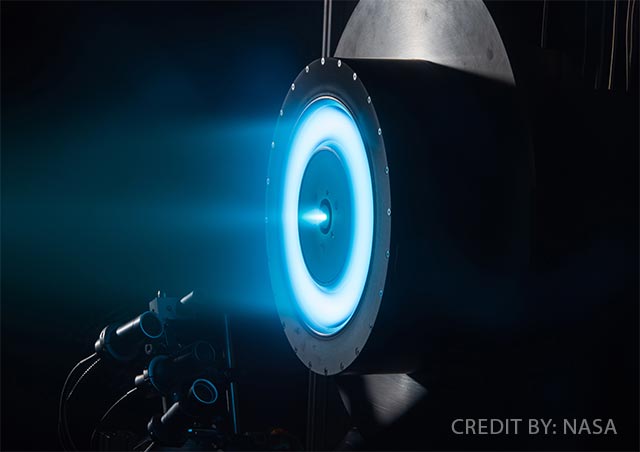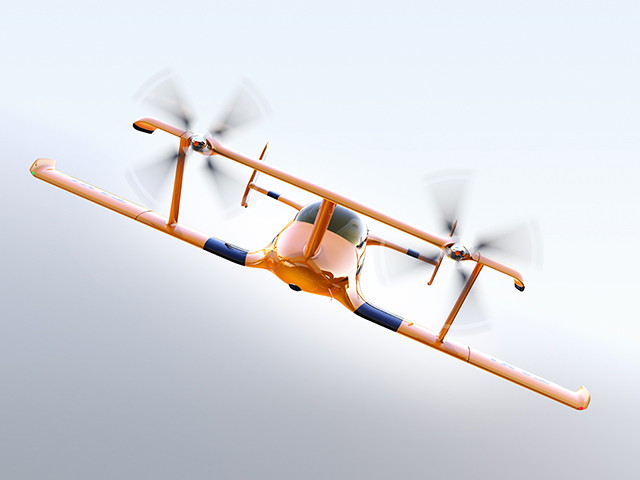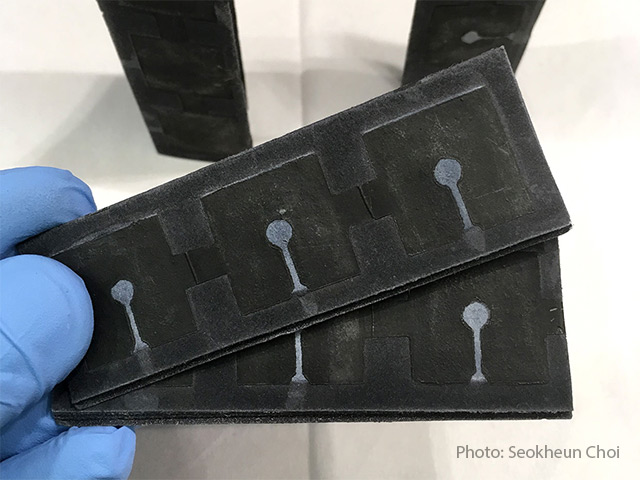Space flight milestone: Next-gen ion engine may one day send Americans to Mars
12/03/2018 / By Edsel Cook

In a few more years, American astronauts will return to the Moon. Not long afterwards, they will embark on the very first manned journey to Mars. Their future spacecraft will be propelled by a new generation of ion engines, the prototype of which has just passed an important test.
In a New Atlas article, aerospace company Aerojet Rocketdyne issued a proud announcement: Its Advanced Electric Propulsion System (AEPS) thruster has finished the early systems integration test, a thorough evaluation of the completely assembled system.
AEPS is a Hall-type thruster that can put out 13 kilowatts (kW) of power. It was developed and tested by Aerojet Rocketdyne with the help of engineers from two NASA laboratories.
The new thruster promises to resolve the primary challenge faced by NASA in its ambitious plan to return to the Moon and send out manned deep-space missions: The lack of a suitably light and powerful propulsion system for its spacecraft.
Ion thrusters will propel NASA’s future spacecraft to the Moon and Mars
Traditional chemical engines have pretty much reached the limit of their performance. Nuclear thermal rockets are still too underdeveloped to serve as the primary means of propulsion for manned spacecraft for long journeys.
Ion thrusters did not receive much consideration until the recent success of the NEXT and DAWN missions. Those space probes demonstrated the potency of a propulsion system that could run on light fuel loads with excellent efficiency.
Aerojet Rocketdyne engineers realized that ion thrusters were not just a short-term solution – the technology could eventually be applied to many other roles.
The company is directly responsible for the thruster, power processing unit, xenon flow controller, and electrical harness of the AEPS. These systems will be powered by solar panels.
The AEPS itself is an ion drive that uses magnetic fields to catch electrons. The captured particles will be used to ionize xenon fuel. The resulting plasma will be expelled at great speeds.
The electric propulsion drive is expected to achieve a maximum output of 50 kW. NASA believes it can tweak the efficiency of the AEPS thruster so that it will achieve twice the power of existing ion thrusters.
Once they are cleared for service, the AEPS could see use aboard different spacecraft. They could be fitted aboard deep-space probes, the manned Mars spacecraft, and the planned Gateway deep-space station near the Moon.
Important parts of the AEPS ion thruster passes latest test
Aerojet Rocketdyne and NASA engineers conducted the final part of the early system integration test at the Glenn Research Center in Cleveland, Ohio. The test covered two elements of the thruster that provided electrical power to the device.
Breadboard prototypes of the discharge supply unit and power processing unit were hooked up to an ion thruster. They were then evaluated for their ability to convert power, as well as the amount of heat they produced.
In the test, the discharge supply unit and the power processing unit proved to be very efficient at power conversion. They also produced minimal amounts of waste heat, an important trait for spacecraft.
This concluded the early systems integration tests. The engineering team will be finalizing the AEPS design and verifying every element. If it passes the critical design review, the thruster will be cleared for production.
“Our AEPS discharge supply unit performed exceptionally, yielding significant conversion efficiency improvements important for future demanding missions,” remarked Aerojet Rocketdyne CEO and president Eileen Drake. “These results are a testament to the Aerojet Rocketdyne team’s focus and dedication to advancing the state of the art in this critical in-space technology area.”
Stay up-to-date on the latest tech for space exploration at SpaceTourism.news.
Sources include:
Tagged Under: Aerojet Rocketdyne, future science, future tech, ion engine, ion thruster, NASA, science and technology, space & tech, space exploration, space travel, Spacecraft



















